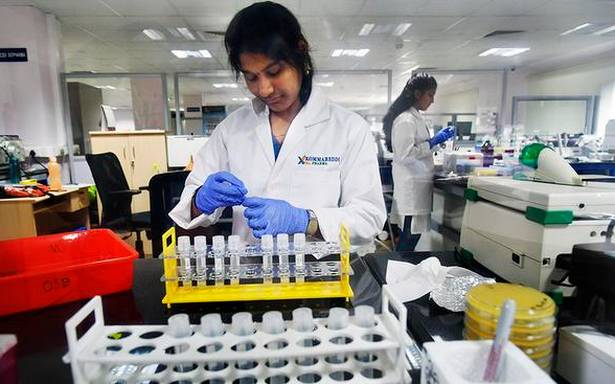Two mRNA vaccines — Moderna and Pfizer — are already in use across the world
The Centre for Cellular and Molecular Biology (CCMB) is working in collaboration with the Indian Institute of Chemical Technology (IICT) among others for developing an indigenous mRNA vaccine.
“It is going to take a while with rigorous development and testing before it can be brought out in the form of an injectable vaccine,” says CCMB director Vinay Kumar Nandicoori. “This had been started by my predecessor Rakesh Mishra and we are continuing the process — doing analysis, testing out multiple steps in the last few months like making the RNA, and packaging into lipid particles etc,” he explains.
The director points out that although the mRNA vaccine-making is not novel because two mRNA vaccines — Moderna and Pfizer — are already in use across the world to tackle the COVID pandemic, it nevertheless requires a lot of work as the process has not been obtained from any company.
The premier scientific institute has been at the forefront right from the time the pandemic broke out in March 2020, working on validation of diagnostic kits, developing new technologies, testing new drugs, training personnel and for genome sequencing. “We have worked heavily on genome sequencing and approximately 12% of all the sequences across the country have come out of CCMB,” he says.
With generous funding from the Indian SARS-CoV-2 Genomics Consortium (INSACOG) and others like Rockefeller and SBI Foundations, the institute has been able to utilise next-generation sequencing platform ‘Novaseq’ where 700-800 sequences can be done at a time. Through another method called ‘Nanopore’, 50 sequences can be done in one go.
“In the recent past, we have got most samples from Andhra Pradesh. Those are travellers samples and genome sequencing is being done to identify Omicron cases among them,” Mr Nandicoori says. The Centre for DNA Fingerprinting and Diagnostics handles the Telangana and Hyderabad airport samples.
Apart from working on improved diagnostics to test for new variants, testing new drugs and vaccinations, surveillance, genome sequencing, testing in air and sewage sampling may be done consistently to get an idea about the spread of the infection and emergence of new variants.
“Genome sequencing turnaround is about three to four days, so by testing and genome sequencing of COVID-positive samples, we can get information regarding the spread of new variants. Once we test for a certain number of samples, we will know the Omicron percentage in the general population,” he adds.
He remarks that the “whole world should get vaccinated” and maximum possible vaccine coverage should be ensured “before a more virulent variant than Omicron comes from other parts of the world, challenging our immune system”.
Source: Read Full Article

